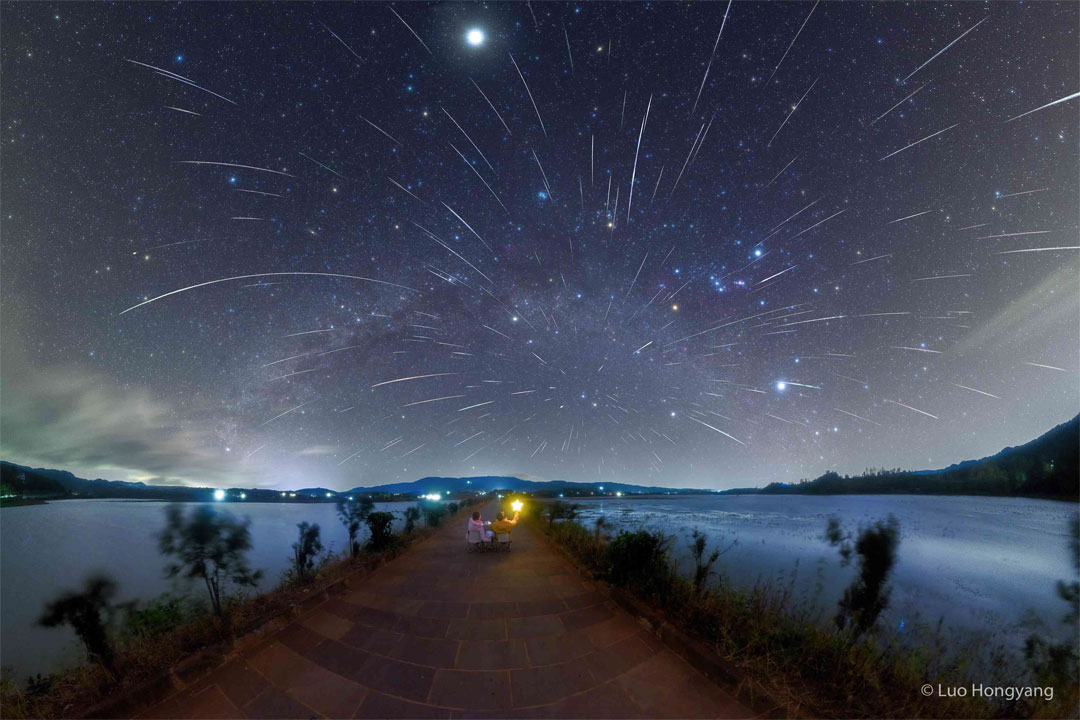2023年12月17日
Geminids over China’s Nianhu Lake
Image Credit & Copyright: Hongyang Luo
Explanation: Where are all of these meteors coming from? In terms of direction on the sky, the pointed answer is the constellation of Gemini. That is why the major meteor shower in December is known as the Geminids — because shower meteors all appear to come from a radiant toward Gemini. Three dimensionally, however, sand-sized debris expelled from the unusual asteroid 3200 Phaethon follows a well-defined orbit about our Sun, and the part of the orbit that approaches Earth is superposed in front of the constellation of Gemini. Therefore, when Earth crosses this orbit, the radiant point of falling debris appears in Gemini. Featured here is a composite of many images taken a few days ago through dark skies from Nianhu Lake in China. Over 100 bright meteor streaks from the Geminids meteor shower are visible.
APOD Year in Review (2023): RJN’s Night Sky Network Lecture
Tomorrow’s picture: the same color
中国念湖上空的双子座流星雨
影像提供与版权: Hongyang Luo
说明: 这些流星是打那里来的?以在天空的方向来说,源头在双子座。因为这群12月的大流星雨,看似源自双子座内的辐射点,故称为双子座流星雨。在三维空间上,从怪异法厄同小行星(3200 Phaethon)剥离出来的沙粒状碎片,沿着特定的轨道绕行太阳,而最靠近地球的轨道区就出现在双子座的前方。也因此,每当地球穿过这颗小行星的轨道时,那些洒落的碎片之辐射点就看似位于双子座内。上面这幅组合自多张摄于数天前的照片之主题影像,记录了超过100颗双子座流星雨的明亮流星掠过中国念湖上方的幽暗夜空。
APOD年度回顾(2023): RJN的夜空网络讲座
明日的图片: the same color







